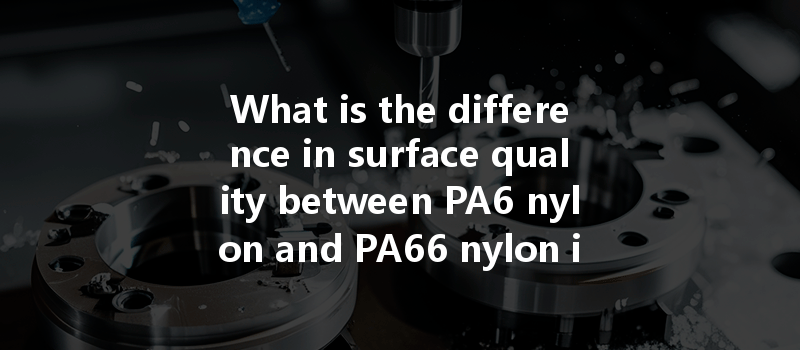Opening:
Did you know that nearly 40% of nylon production is focused on PA6 and PA66 nylon types? These two variants are among the most widely used plastics in the CNC machining industry, renowned for their remarkable mechanical properties and versatility. But how do they compare in terms of surface quality when machined? This is a critical question for manufacturers and engineers aiming to optimize performance and durability in their products.
In this blog, we will explore the differences in surface quality between PA6 nylon and PA66 nylon during CNC machining. We will delve into their material properties, machining processes, challenges, and provide effective strategies to achieve optimal surface quality. By the end of this discussion, you will have a clear understanding of how to select the right nylon variant for your specific applications.
Surface Quality in CNC Machining
Understanding Surface Quality
Surface quality refers to the texture and smoothness of a material after machining. Metrics such as Ra (average roughness) and Rz (mean roughness depth) are often used to evaluate surface quality. A smoother surface typically indicates better machining processes and material handling, thereby enhancing product performance and aesthetics. The surface quality can greatly affect the longevity, friction properties, and overall functionality of the finished part.
Material Properties of PA6 and PA66 Nylon
PA6 Nylon
PA6, also known as Nylon 6, is a semi-crystalline thermoplastic with excellent mechanical and physical properties. It exhibits:
PA66 Nylon
On the other hand, PA66, also known as Nylon 66, is a more rigid variant, boasting:
Understanding these characteristics is vital for manufacturers to make informed decisions when selecting materials for specific applications.
CNC Machining Process Overview
CNC Machining Basics
CNC (Computer Numerical Control) machining is a subtractive manufacturing process where pre-programmed computer software dictates the movement of factory tools and machinery. While the process is effective for various materials, the specific properties of PA6 and PA66 nylons can yield distinct results in surface quality.
Key Factors that Affect Surface Quality
Comparing Surface Quality: PA6 vs. PA66

Machining Characteristics
When machining PA6 nylon, the key benefits include the ability to achieve a smoother finish due to its inherent flexibility. However, its softness may lead to increased wear of the tooling and potential for material deformation under high pressures.
Conversely, machining PA66 results in a harder surface compared to PA6, translating to potentially higher surface quality. However, the rigidity may also cause brittleness, potentially leading to chipping or cracking during cutting operations.
Surface Finish Achievements
Challenges in Achieving Surface Quality
Common Issues Faced
Techniques to Enhance Surface Quality
Optimizing Machining Parameters
Real-World Applications and Use Cases
Both PA6 and PA66 find applications across various industries due to their unique properties. Depending on the specific requirements of surface finish, one may be preferred over the other:
Understanding the surface quality differences between PA6 and PA66 nylon during CNC machining is essential for manufacturers looking to maximize the functionality and appearance of their products. By carefully evaluating material properties, optimizing machining parameters, and implementing effective finishing techniques, you can achieve the desired surface quality for your specific applications.
As you consider your next CNC machining project, reflect on the nuances between these two nylon types. Selecting the right material not only affects surface quality but can also impact the performance and longevity of the parts you produce. Remember that informed decisions lead to enhanced operational efficiency and ultimately contribute to your success in the industry.
This blog serves as a comprehensive guide for professionals in CNC machining to navigate the complexities of nylon processing. By understanding how material properties, machining processes, and post-processing techniques intersect, you position yourself to make impactful decisions in your manufacturing practices.






